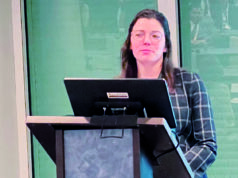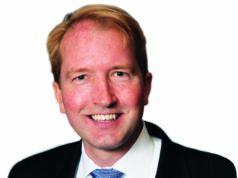
Burnout is associated with silence in various contexts. It is called the silent crisis, the silent epidemic, or the silent killer. What is not talked about is the pressure or fear at work, whether professional or personal, that can lead to avoidance behavior and self-imposed silence. Surgical residents have been reported to have burnout rates >60%, and it is likely that causative factors include the pressure or fear at work. My concern has to do with silence associated with physician employees in non-clinical roles at the individual level.
To this end, the effects of silence on burnout were studied in 600 adults.1 Four differentially motivated types of silence (acquiescent, quiescent, prosocial, and opportunistic) were studied with three components of burnout (depersonalization, emotional exhaustion, and perceptions of reduced personal accomplishment). Pro-social and opportunistic types of silence were self-imposed, whereas acquiescent and quiescent silence were forced. The authors concluded that silence likely leads to burnout, not the other way around.
It is also likely that one of the critical factors leading to burnout in employed physicians is self-imposed silence. As an employee, their ability to speak out or “voice” is defined as the “discretionary communication of ideas, suggestions, concerns, or opinions about work-related issues with the intent to improve organizational or unit functioning.”2 In contrast, employee “silence” is the “conscious withholding of information, suggestions, ideas, questions, or concerns about potentially important work- or organization-related issues from persons who might be able to take action to address those issues.”2
There is obviously some nuance to this, rather than a binary choice. Benign examples of silence include new hires choosing to be silent in order to scan the workplace and, with time, evolve into a voice. Experienced hires may start as a voice but, either from bad experiences associated with career derailment or fatigue based on learned helplessness (lack of response for change) may choose to stay silent. Also, physicians may be a voice on some and adopt silence on other issues.
Furthermore, because one is a voice in meetings does not mean that person does not have hidden feelings and, similarly, the quiet physician does not necessarily imply that that physician has hidden issues they are holding inside. In addition to individual or intrinsic factors, silence may be self-imposed due to extrinsic factors. Some of us may resent being under pressure to stay silent in order to avoid personal harm, and take on passive-aggressive behavior by being a voice on easy, non-controversial issues, but withhold important and critical information from leaders.
Reasons for this self-imposed silence may be several, but primarily because it represents a danger in some way, or is seen as pointless. Job security, academic promotion, or moving up in a professional society may lead to internal pressure to inhibit expression and modify behavior, which then takes a psychological toll on the physician—especially in a personality that wants to progress but does not like making “waves.”
Is there a link between silence, psychological safety and burnout? Apparently, yes. Knol indicates that it is frequent silence, particularly “high silence” (suppression of serious flaws), that engenders burnout rather than voice reducing it.1 Sherf and colleagues contend that we rely on our biologically based intrinsic “behavioral activation system” and “behavioral inhibition regulatory system” to assist us on when we use our voice or silence.3 The former is more of a positive state of mind and hopeful, whereas the latter is concerned with the worry, even threats, from speaking out. They also point out that individual personality traits— such as extroversion for instance—may affect outcomes.
Having had experience in both the private sector as well as the academic workplace, I have observed that the latter physician is more prone to suffer burnout from pressure to remain silent, probably because one expects to express one’s thoughts and ideas freely in the learning environment. I have seen senior faculty fear for their job and career advancement if they were to speak out and displease a chair or a dean. This forced silence then becomes incorporated into the culture as younger folks watch and learn that they do not have the freedom to dissent. Among other stressors, inability to express ideas at work is a recipe for burnout. One could blame the general erosion of free speech, but this facet existed long before current trends.
Why is this important for hospital leaders? Leaders may not be aware that they are suppressing employee voices and fostering silence, because high silence in a health system is not only related to exhaustion and burnout, but hurts productivity. It also harms patient care in the safety and quality-of-care sphere.
Leaders are also trying to combat burnout using all the tools they have but may remain non-cognizant of the link between silence and burnout. Instead, their way of addressing burnout is of a transactional nature.
How does the leader provide psychological safety to physicians and other employees and assure their well-being? Psychological safety is described as ‘‘the degree to which people view (their) environment as conducive to interpersonally risky behaviors like speaking up or asking for help.”4
Establishing psychological safety has to be part of a cascading organizational culture. In the non-clinical areas, leaders should allow, support and commend physicians to take risks by sharing information and ideas, asking questions, offering feedback and airing concerns. Anonymous surveys that do not ask for demographic data, may allow frank input.
While supportive voices are given more weight by leaders and managers, giving physicians space to freely share their thoughts and ideas in a safe manner needs to be emphasized. Besides the resilience, as well as mindfulness training, tips on communication skills that include techniques to express thoughts in a non-threatening manner may also be useful.
Ultimately, our leaders need to be encouraged to allow respectful dissent and discussion under the umbrella of psychological safety for physician employees. Self-imposed silence is an important stressor for burnout.
References
- Knoll M, Hall RJ, Weigelt O. A longitudinal study of the relationships between four differentially motivated forms of employee silence and burnout. Journal of Occupational Health Psychology. 2018; 24(5), 572–589.
- Morrison, E. W. Employee voice behavior: Integration and directions for future research. The Academy of Management Annals. 2011; 5(1), 373–412.
- Sherf EN, Parke MR, Isaakyan, S. Distinguishing voice and silence at work: Unique relationships with perceived impact, psychological safety, and burnout. Academy of Management Journal. 2021; Vol. 64, No. 1, 114–148.
- Edmondson AC, Higgins M, Singer S, et al. Understanding psychological safety in health care and education organizations: A comparative perspective. Res Hum Dev. 2016; 13:65–83.
Bhagwan Satiani, MD, is professor emeritus in the division of vascular diseases and surgery in the College of Medicine at The Ohio State University, Columbus, Ohio. He is an associate medical editor of Vascular Specialist.












